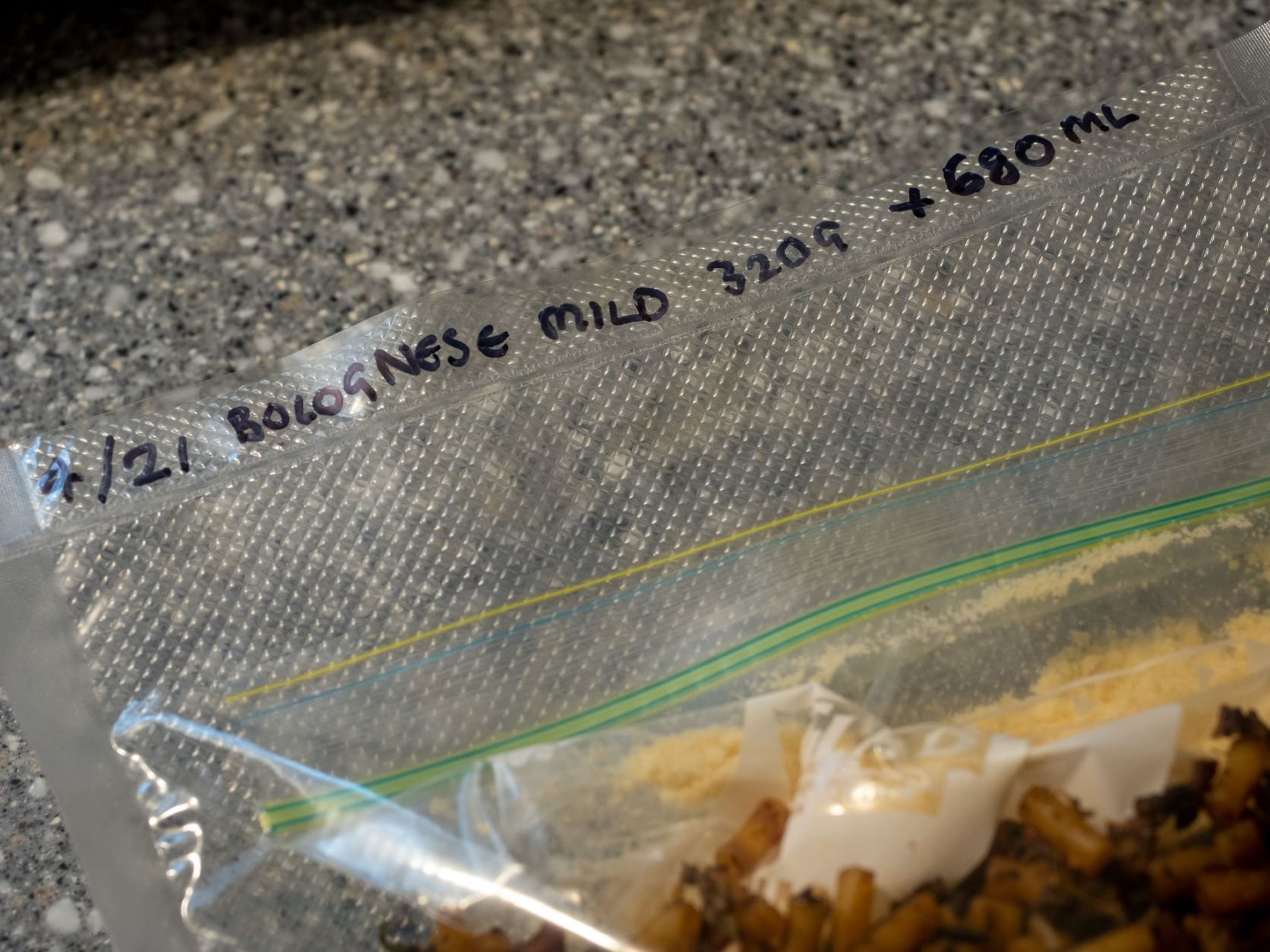How to Dehydrate and Package Camping Meals
Yes it is possible to have cost effective, delish meals with serving sizes to match your appetite. Here’s how.
What you Need
A dehydrator or oven (for the latter, trays and baking paper or silicone sheets). The Excalibur 9 tray is the gold standard home dehydrator but also expensive. Only buy it if you’re sure you’ll use it a lot, otherwise start with a cheap brand knowing the process will take longer and be more farting around to use.
A scale
Usual kitchen things (utensils, stove, pots etc)
Ziploc bags (OR sous vide/food saver vac seal bags, and a Vac sealer).
Food and a recipe suitable for dehydrating - see our Adapt your favourite Recipes and recipe blogs
Scrupulous hygiene when cooking, dehydrating and packaging up meals to prevent contamination.
How to Dry and Package your Dehydrated Dinner
Make up one serve on your normal serving plate, adding as much pasta and sauce (or rice or pulses etc) as you normally would. Weigh the amount of pasta, and the amount of sauce (for your records). Add the two weights together: this is your WET WEIGHT for one serving.
Our recipe instructions and amounts are usually for two serves rather than one, so double the amounts in a bowl to make two servings for one meal.
Check the WET WEIGHT is double your single serve - adjust if necessary.
Weigh out two servings (one meal for each of us).
Place these two servings of the one meal in a thin uncrowded layer on a dehydrating tray or oven tray lined with baking paper. If your tray is not large enough you will simply have to put one serve on the tray and use that as your template - remembering you will then have to double it again when packaging. Mark this tray with a teaspoon.
Mix the remaining pasta and sauce in the same proportions and spread out on additional trays.
Dry on a low heat 62C (145F) for anything containing cooked meat, 52 C-57 C (120-135F) for vegetarian meals in the oven with the door cracked open, or in your dehydrator following instructions, breaking up any lumps occasionally.
Meal is dehydrated when it feels completely dry and crisp, rather than rubbery or pliable.
Weigh the dried portion(s) on your marked tray. This is your DRY weight. Subtract this amount from your wet weight to know how much water to add; if you want your sauce a bit runnier, add a bit more water.
In this example our wet weight for two serves for one meal was 1000 grams. The dry weight 322 grams. So when we need to rehydrate we will need approximately 680 grams (ie 680 ml) of water.
We vac seal into 300mm x 200mm sousvide/vacuum sealer bags that are stable in boiling water; you can also use rolls that you cut to size.
As we always eat together, I place the two serves in one sous-vide bag to save weight. I partially vacseal because completely vac sealing often causes pasta or sharp bits of meat to puncture the bag. If fully vac sealing, fold a sheet of baking paper and slip into the vac bag before adding ingredients and sealing.
On the outside I write the date, the meal, and how many ml to add for the two serves inside. It’s usually between 700ml-1200ml depending on the recipe
If you’ve made enough for several meals then simply divide the remaining dehydrated food into two-serving batches and label as above.
Store in a cool dark place, or freezer if you haven’t rinsed your mince.








